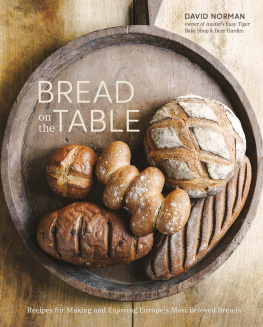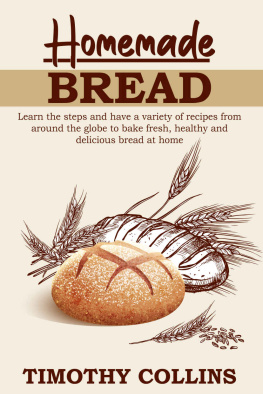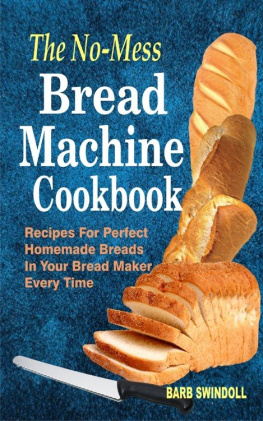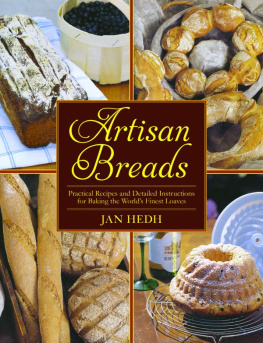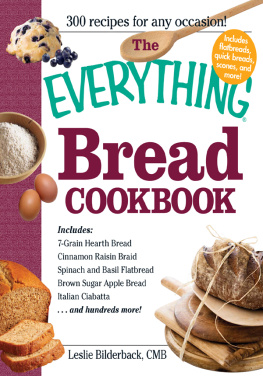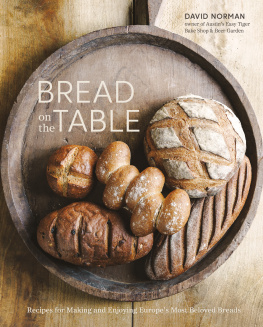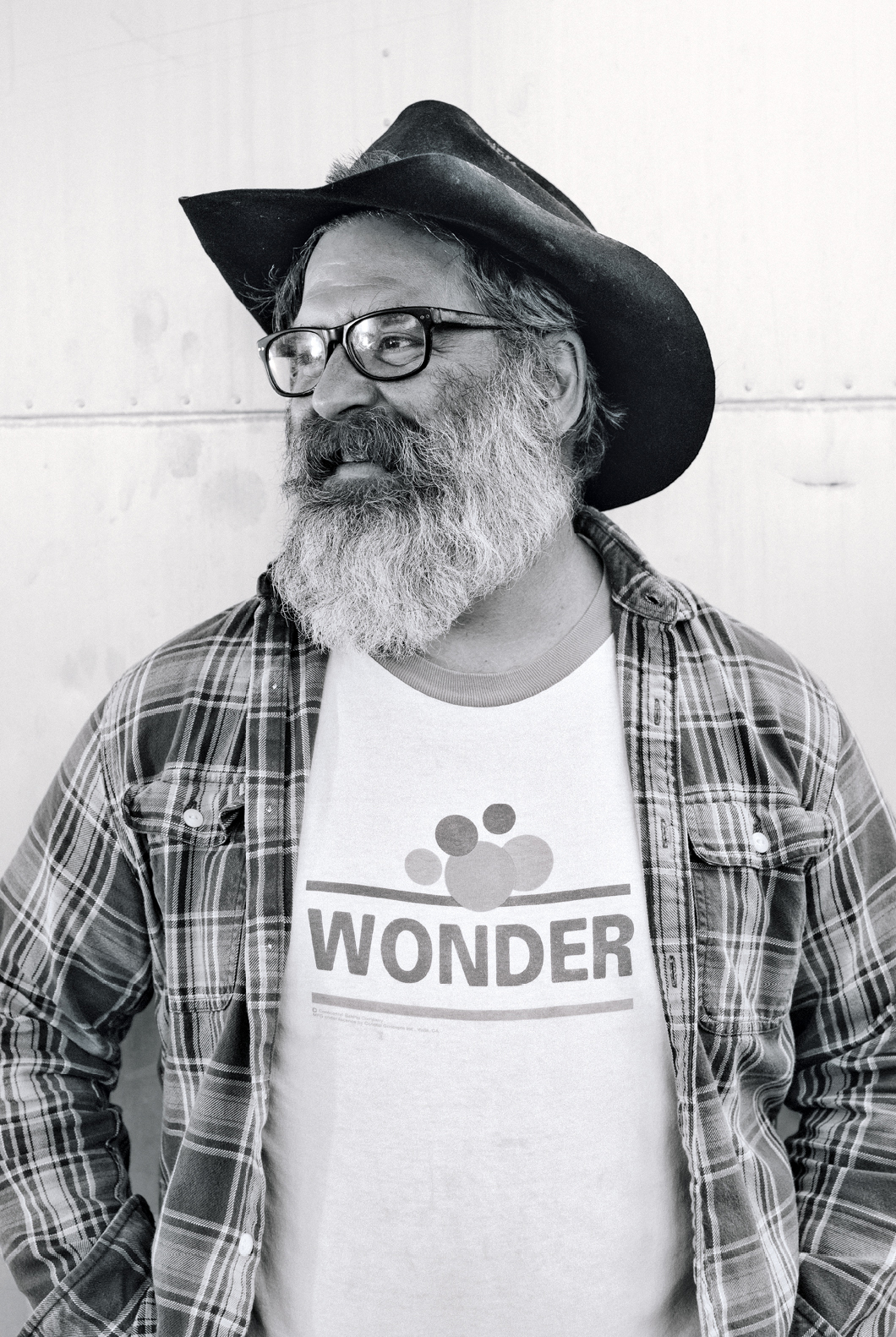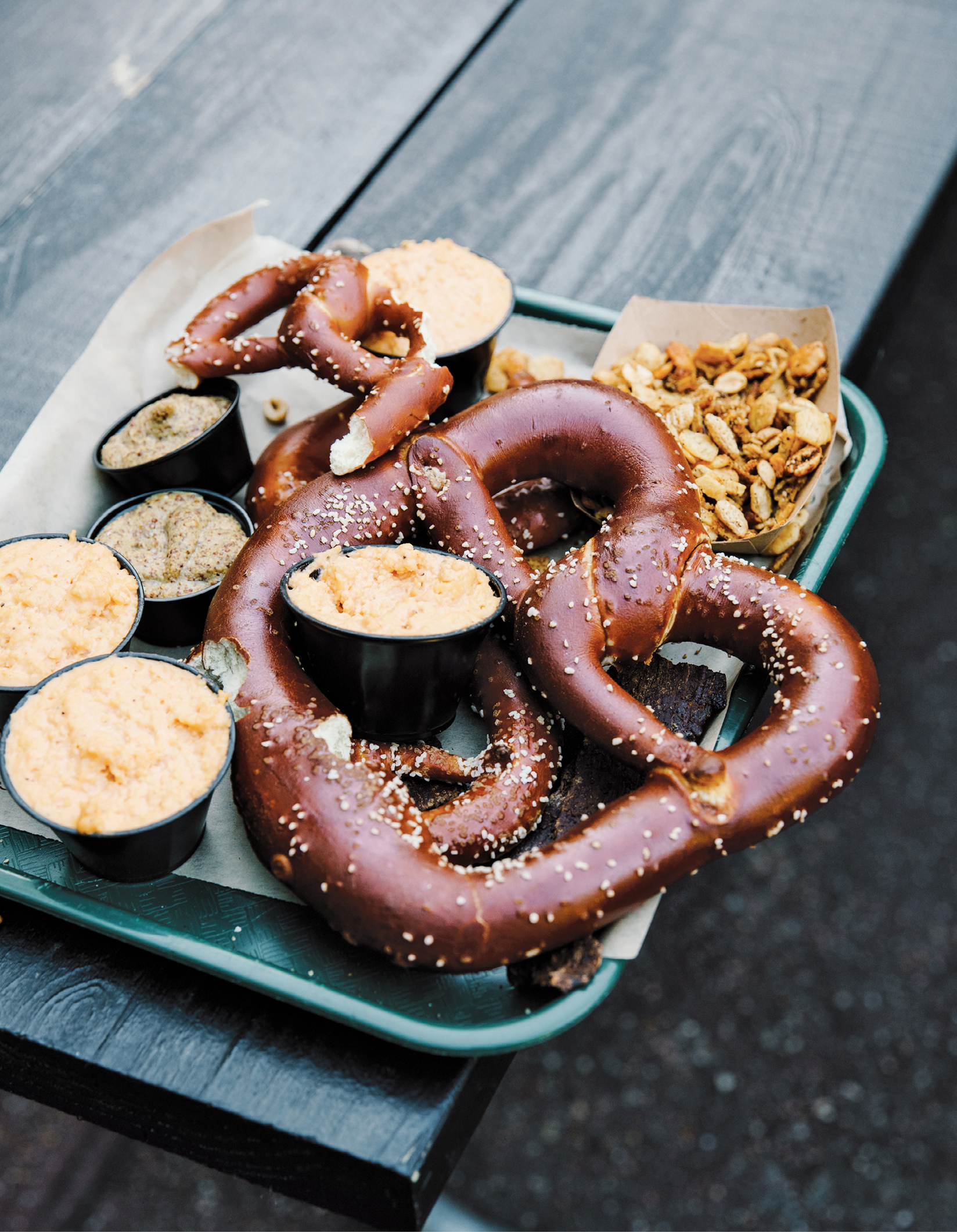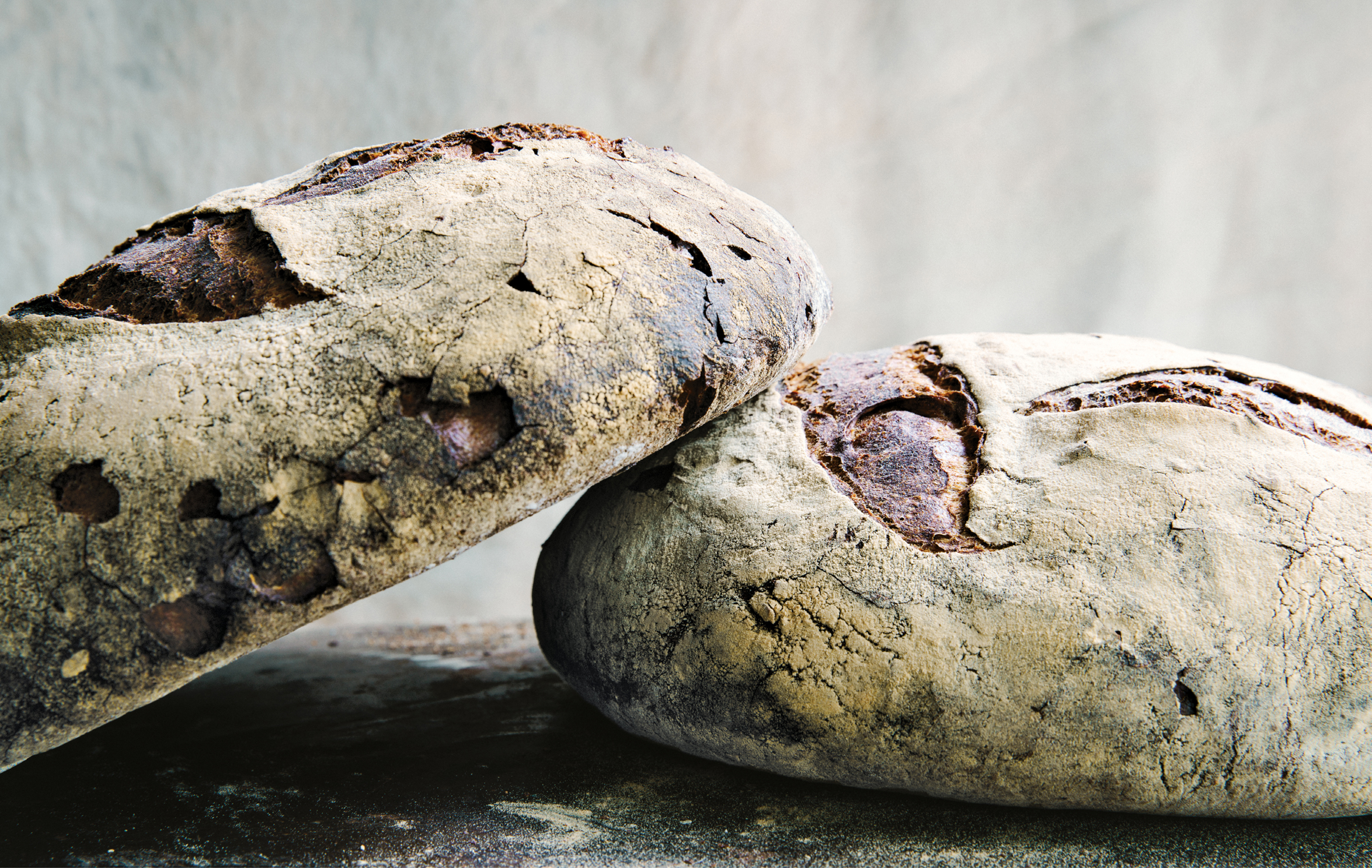Contents
Landmarks
Print Page List
ACKNOWLEDGMENTS
Thank you to David Hale Smith, my agent, for getting this project from fanciful idea to concrete proposal and finding it a great home with Ten Speed Press.
Thanks to Emily Timberlake for your enthusiasm, encouragement, and guidance getting the book started, and to Kelly Snowden and Emma Rudolph for your hard work, stewardship, and (nearly) endless patience with a neophyte author and busy baker. Thanks for sticking with me and pushing to get this book out there. For the stunning design, thank you to Lisa Bieser. Thank you also to the rest of the team at Ten Speed, including Jane Chinn, David Hawk, Windy Dorresteyn, and Kara Plikaitis.
Johnny Autry, your photos add brilliance and clarity and show the boundless beauty that can come from flour, water, salt, and yeast. We sure had fun on the back porch. Thank you to Charlotte Autry for styling the beautiful food and table shots.
Thanks Aaron and Stacey Franklin for letting us shoot at the trailer and sharing BBQ with us.
Thank you so much to Mariana and Ian McEnroe for sharing recipes and a wonderful afternoon of learning, eating, and sharing in your lovely home.
Thank you to the many bakers who have guided and taught me so much through the years, including Jacqueline Dufty, who got me started; Lisa Berg and Dennis Gelpe in Minneapolis; Amy Scherber; Craig Kominiak; Mark Fiorentino; Gwen Bassetti; and especially Leslie Mackie. Special thanks to Michel Suas for being a mentor and genuine friend.
Thank you to Bob Gillett, Andrew Curren, Scott Hentschel, and Vince Ashwill for conceiving and building Easy Tiger. We made something magical together. Thank you to all the leads, managers, and eager bakers that have punched so much dough together to bring the highest quality bread to Austin.
Tack s mycket to Britt, Hans-Erik, Michael, and Marie Jonsn for sharing your home, your lives, and your warmth and for sparking a lifelong love for brd.
Mike and Julie Disbrowe and the rest of the Minnesota clan, it is so wonderful to be a part of your family. Thanks for all the love and support and the helping hands always. Uff da, and for the lefse griddle.
To Jana Norman and Paul Turley way off in Adelaide, wish we could break bread more often.
Thank you so much to Fran Norman for all your love and support with everything I have wanted to pursue. Your belief in me always means so much. So wish that Dad could have read these pages. You both gave me so much growing up, not the least of which was a hearty, but discerning, appetite.
Most of all, thank you to Paula Disbrowe and our beautiful children, Flannery and Wyatt. Having a baker in the family means early mornings, late nights, lots of weekends and holidays cut short or missed, and dough clinging to forearms, but also wonderful smells, tasty treats in the morning, fresh bread on the table, and the best lunch box sandwiches. We have had many great adventures together. You are all my light and inspiration.
ABOUT THE AUTHOR
David Norman is the Head Doughpuncher and a founding partner of Easy Tiger Bake Shop and Beer Garden. Previously, he was the head baker at Grand Central Bakery in Seattle and TriBakery, Ecce Panis, and Bouley Bakery in New York City. He taught the International Bread program at the French Culinary Institute and was an instructor at the San Francisco Baking Institute.
He lives with his wife and two children in Austin, Texas.
French Bread
Learning from the Masters
FRENCH BREAD is arguably the worlds most iconic bread. From the ubiquitous baguette to a rustic country loaf, French bread inspires bakers around the globe. French baking has been central to my career, grounding my technique no matter what type of bread I am baking.
Much like formal French cuisine, the techniques for making French breads have been codified over the ages. Although the formula may not vary much from baker to baker, the skill of the baker brings out flavors and nuances that create a signature style. In the annual Parisian competition for the best baguette in the city, which besides a cash prize carries the honor of supplying the French president baguettes for a year, the winning recipe could start off with the same list of ingredients as a pale, cottony selection from the supermarch (supermarket). Yet the flour type, use of a starter, mixing time, mixing speed, dough temperature, fermentation time, shaping technique, proofing conditions, scoring, oven type, baking temperature, and length of the bake all impact the final loaf.
Early in my career, I had an opportunity to attend one of the first seminars put on by the fledgling Bread Bakers Guild of America. It was taught by the renowned baking expert Professor Raymond Calvel. Professor Calvel taught generations of bakers and millers in France and traveled the world teaching the craft of French bread baking. For me and a handful of American bakers who assembled in Berkeley, California, it was our first chance to see the techniques and methods of a skilled, educated baker up close. This was shortly after I had taken over as head baker at Seattles Grand Central Bakery. It helped push me through the first great learning curve of my baking career, as I was tackling the responsibility of all bread production for a bakerys wholesale division.
French bread went through a period of decline starting in the late 1950s with the advent of high-speed mixers. Bakers used them to knead their dough intensely, forcing more air into it, then shortened the fermentation time. This made it possible for them to shorten their hours and increase their production, often a necessity as the French government regulated the price of many bread varieties, most notably the baguette. However, it also led to an inferior flavor and texture, which precipitated a decline in bread consumption in France. Professor Calvel worked tirelessly to fight against this trend and developed techniques to help shorten the production cycle while still building great flavor. The technique he is most known for, the autolyse (see ), involves a resting period that allows the gluten structure to start to form so that a much shorter kneading time is necessary to develop the dough, preventing the bleaching out of the color and flavor from the dough.
What I learned from Calvel fundamentally influenced my understanding of the techniques of making bread. To this day, I make baguettes the way I learned at that seminar and use the mixing, fermenting, and shaping methods I first encountered there for numerous other breads. Even so, I still had much to learn several years later when I took over as the instructor for the professional bread baking program at the French Culinary Institute in New York City. Teaching others meant not only knowing how to make good bread, but understanding the reasons and science behind the methods to be able to pass that information along to others. From the esteemed deans of the school, Andr Soltner, Alain Sailhac, Jacques Torres, and Jacques Ppin, I gained an even deeper appreciation for the importance of skilled technique in cooking and baking. In an article for the New York Times, Ppin explained the proper way to

